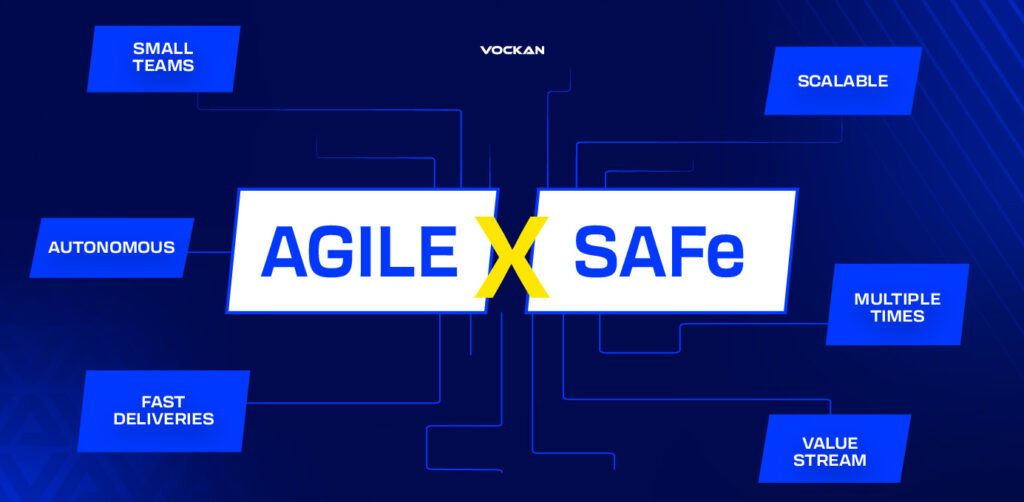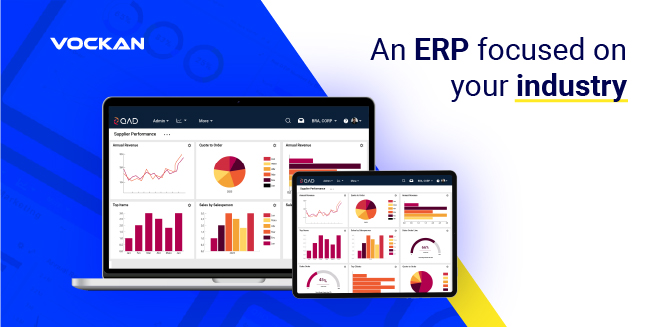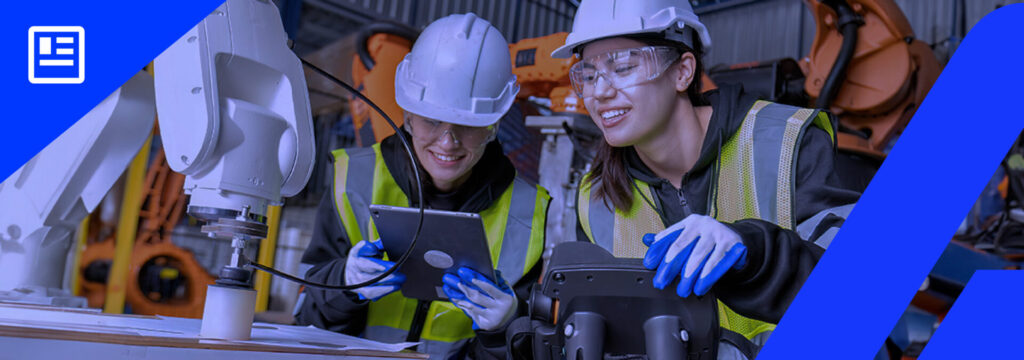Several companies have been seeking more agile and efficient ways to align strategy, operations and value delivery.
The complexity of production processes, combined with the constant need for innovation and adaptation, requires approaches that promote agility in execution.
In this context, agile methodologies are beginning to gain ground in industrial environments, from the factory floor to strategic management.
This is where SAFe (Scaled Agile Framework) stands out as a powerful framework for scaling agility in industries.
Is your industry really being agile in its processes or is it just keeping up with the speed that the market demands?
In this article, we will explore what SAFe is, its fundamental principles and how it can be applied to drive efficiency and innovation in complex industrial processes. Keep reading to find out!
What is SAFe (Scaled Agile Framework) and How Does It Work?
Created in 2011 by Dean Leffingwell, SAFe (Scaled Agile Framework) is a framework that helps large companies become more agile, even with all their complexity.
It combines agile practices, lean principles and systemic thinking to align teams, processes and strategy at all levels of the organization. Instead of treating agility as something restricted to a team or department, SAFe proposes a scaled approach.
Guilherme Loss, Project Manager at Vockan, explains that “Safe is a scaled agile framework that aims to be applied in large companies with multiple teams, aiming for greater predictability in deliveries”.
It offers an organized way to coordinate several teams, promoting continuous collaboration, frequent deliveries and customer focus, without losing control over governance, quality and business goals. Rock Content states that “with the use of the Scaled Agile Framework, it is possible to accelerate productivity without losing quality”.
Scaled Agile Framework (SAFe) Principles
The Scaled Agile Framework is a robust methodology for scaling agility in complex organizations.
The SAFe mindset is based on principles of Lean thinking (focus on value stream, elimination of waste and continuous improvement), DevOps and the agile mindset (collaboration, adaptation and customer focus).
In addition, value streams represent all the steps an organization takes to deliver real value to the customer. They help map processes, identify bottlenecks and align different teams around a common goal, making work more collaborative, efficient and focused on what really matters to the end user.
Agile Release Trains (ARTs) are the practical structure where this value is delivered. They function as cross-functional “teams of teams” that work in a coordinated manner and with a regular cadence (8 to 12 weeks), always focused on delivering solutions continuously and with quality.
SAFe differs from other agile methodologies because it focuses on the organizational level with clear structures, defined roles and alignment between areas. With PI Planning as an important principle, it is possible to score what is necessary for future project deliveries, identify risks and dependencies between tasks, allowing for better forecasting of deadlines.
SAFe x Agile Methodologies: What is the Ideal Path to Scale Agility in Industry?

When we talk about agility in processes, many companies immediately think of agile methodologies such as Scrum or Kanban. Since Agile is a powerful approach, based on short cycles, collaboration between teams and frequent delivery of value to the customer.
Traditional Agile works very well for small teams and more localized projects. However, in large industries, with dozens of teams distributed between engineering, production, maintenance and IT, the methodology is not as effective.
SAFe is an evolution of Agile, created to scale agility in large organizations. It offers a clear and integrated structure so that several teams can work in a synchronized manner, even on complex and interdependent projects.
While Agile focuses on fast and continuous delivery within a team, SAFe goes further: it integrates people, processes and organizational strategy, promoting greater alignment, predictability and innovation. It incorporates Lean, DevOps and value management practices to transform the way the entire company operates.
Why use SAFe in Industry?
SAFe is essential to expanding agility beyond IT, connecting key areas of the industry such as engineering, production, maintenance and quality into a single, effective workflow.
Faced with increasing pressure for efficiency and speed, the industry needs to be more flexible and collaborative, without giving up control over deadlines, costs and quality.
The methodology helps to break down silos, align multidisciplinary teams and shorten the time between idea and value delivery.
In practice, SAFe offers a structured way to work with agility on complex and interdependent projects, which are very common in the industry.
In addition, the Scaled Agile Framework incorporates values for waste reduction, continuous flow and constant improvement, creating a natural bridge between agility and industrial operations.
To illustrate, imagine an automotive industry, where development cycles are long and the pressure for innovation is constant.
Automakers face the challenge of launching new models more quickly, incorporating embedded technologies, meeting regulatory requirements, without losing quality standards and cost control.
In this scenario, the methodology can be an ally, as it allows teams to be synchronized, reduces the time between product design and delivery, and increases visibility of priorities and risks.
On the other hand, the application of short cycles and well-defined cadences allows products and processes to be quickly adapted to market changes, with greater collaboration between internal areas and external suppliers, resulting in greater predictability, less rework, and greater strategic alignment.

Read also: How to Apply Agile Methodologies in Industry and Increase Operational Efficiency
Main Challenges of SAFe in the Industrial Sector
Implementing SAFe in the industrial sector is not a simple task. After all, it is a traditionally structured environment, with rigid processes, areas often operating in silos and a culture that is not always open to rapid changes.
According to the Project Manager, the most common mistakes in implementing SAFe include: absent leadership, lack of cultural change, inadequate training and copying SAFe without adaptation.
Understand below what are the possible challenges that may arise during implementation.
| Challenge | Explanation |
| Organizational culture resistant to change | Companies with rigid hierarchies, long-term plans, and highly standardized processes may be more resistant to change. |
| Lack of alignment between technical and operational areas | IT, engineering, maintenance, production and quality teams do not always speak the same language, making it difficult to form multidisciplinary agile teams |
| Difficulty in adapting agile practices to the reality of the factory floor | Some operational teams have fixed routines and little flexibility to participate in agile events such as planning |
| Lack of clarity about the value generated | Some leaders do not have a clear view of ROI in relation to SAFe, thinking of it as a non-strategic tool. |
| Lack of training for teams and leaders | Companies often invest only in improving processes, leaving people aside. This lack of training directly affects results. |
6 Benefits of SAFe for Industrial Operations
SAFe brings an integrated and efficient way of working to the industry. It helps transform heavy structures into more agile and connected operations, without neglecting the quality, safety and robustness that the sector demands.
Rodrigo Galindo, president of Cogna Educação, explains that Kroton (now Cogna) adopted the Scaled Agile Framework as part of its digital transformation journey. The company has achieved alignment of technology and business, promotion of a culture of continuous learning, agility in decision-making, and increased operational efficiency.
For Guilherme Loss, the framework provides the industrial sector with greater agility and innovation, reduction of rework, improvement of quality and predictability.
Below are the six main benefits that the Scaled Agile Framework provides to companies:
More efficient delivery cycles
Instead of waiting months to see the results of a project, SAFe proposes incremental and frequent deliveries, allowing for rapid testing, adjustment and evolution, saving time and reducing waste.
Greater alignment between areas
SAFe breaks down barriers between engineering, production, maintenance, IT, quality and other areas. Everyone starts working towards a common goal, in a synchronized manner and with fluid communication.
Reduced rework and increased predictability
With greater collaboration, transparency and integrated planning, the chances of errors due to misalignment decrease, resulting in less rework, more control over deadlines and greater reliability in deliveries.
Faster and more strategic decisions
Employees can make decisions based on real data, prioritizing what generates the greatest impact for the business.
Greater capacity for innovation with less risk
The tool creates an environment where it is possible to innovate safely, testing ideas in short cycles, with real feedback and room for quick adjustments, allowing innovation to stop being a risk and become a habit.
Continuous improvement as part of the culture
Teams constantly learn from each cycle, making continuous improvement part of the routine on the factory floor, in product development and in leadership.

Read also: What is Line Haul and How to Optimize Your Industrial Logistics
7 Tips on How to Implement Scaled Agile Framework in Industrial Processes
Implementing SAFe in the industrial environment is not simply a matter of applying a new set of practices, it is about changing the way teams collaborate, prioritize and deliver value.
Bringing agility to the factory floor, engineering, maintenance and quality requires a practical, conscious approach adapted to the reality of each organization.
Check out 7 essential tips to make implementation more strategic and effective:
Have a clear purpose
Before applying any framework, it is essential to understand why. Having clarity about the objectives makes the journey more focused and engages leaders from the beginning.
Start small, but with impact
Avoid trying to transform the entire organization at once. Choose a strategic value stream and form an Agile Release Train with multidisciplinary teams that already collaborate in some way.
Involve leadership
Agile transformation in the industry only works with the support of those who make decisions. Leaders and managers need to understand SAFe, participate in training, and act as people who want change.
Measure what matters and adjust the course
Track indicators that show whether the change is generating value, such as cycle time, rework rate, team engagement, efficiency in the production flow or development. Use this data to correct routes.
Strengthen communication on the factory floor
Limited communication is a common problem on the factory floor. Invest in visual, clear, and accessible communication. Keeping everyone informed and aligned creates a sense of belonging and allows teams to actively participate in continuous improvement.
Invest in training
SAFe involves changing mindsets, structures, and ways of leading. Invest in training for all levels (from operators to executives) and create an internal core that follows the journey.
Create a continuous learning cycle
Hold regular meetings to reflect, learn from mistakes, and evolve. This strengthens the agile culture in practice and makes SAFe a natural part of the operation.
Also check out the training on agile methods to help your industry: Workshop – Agile Methods
How QAD BR+ Accelerates the Application of SAFe in Industry
The adoption of SAFe provides agility and strategic alignment.
To maximize these benefits, it is essential to have an ERP that integrates processes and offers real-time visibility.
QAD BR+ is a cloud-based ERP designed for the complexities of Brazilian industry. It offers full integration between areas such as production, logistics, quality and finance, in addition to providing data-based decisions and tax and regulatory compliance.
With QAD BR+, your company will be prepared to implement SAFe effectively, ensuring faster deliveries, reduced rework and a culture of continuous improvement.
Talk to a Vockan specialist and find out how your industry can be more agile and competitive in the market.










